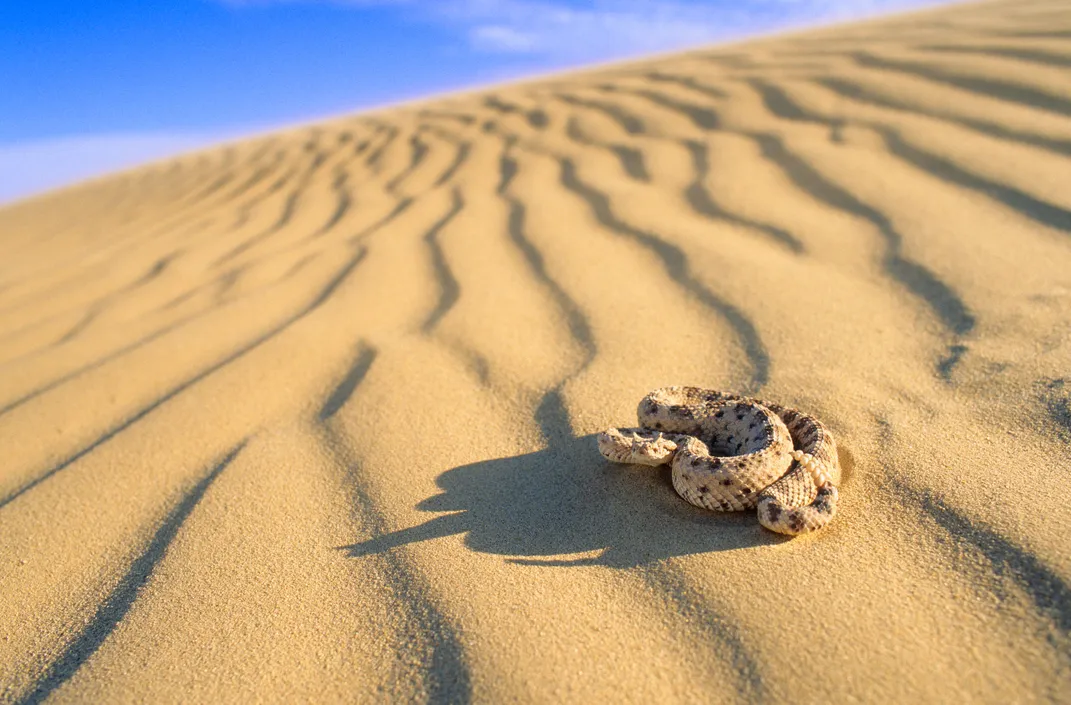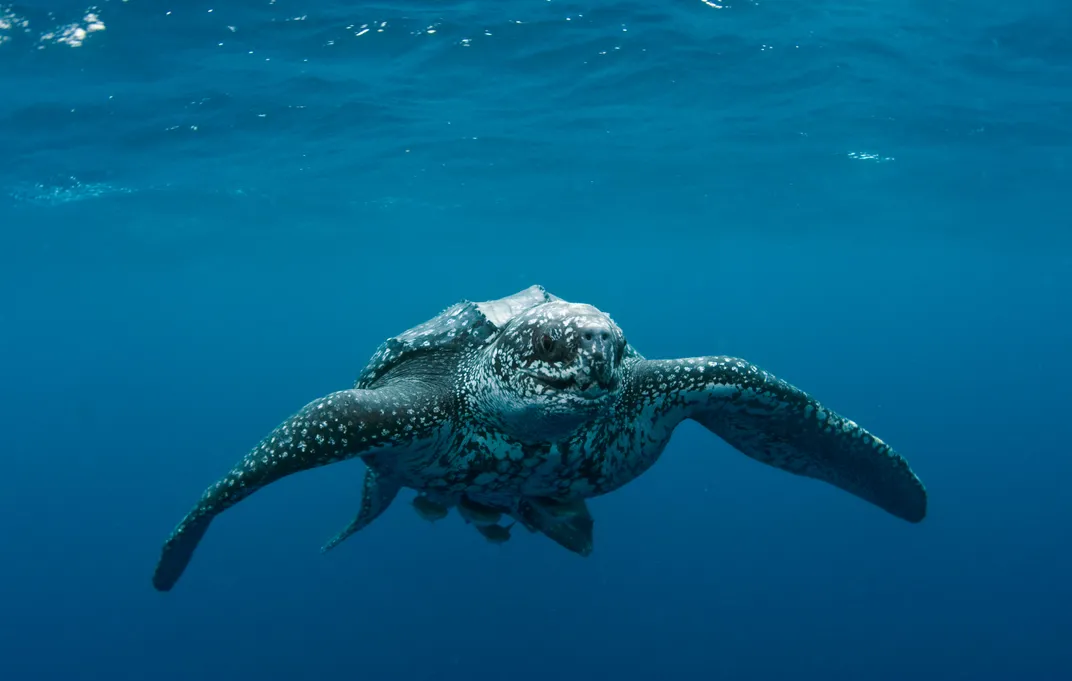What Animal Has Been Thought Not To Be Affected By Snake Venom?
/https://tf-cmsv2-smithsonianmag-media.s3.amazonaws.com/filer/38/d6/38d62dd6-c401-4f93-941c-a8b6c0ad1deb/ewnjc5.jpg)
In 1976, a pupil at the Texas A&M University-Kingsville was tasked with feeding the snakes in what is at present the university's National Natural Toxins Research Middle. Thinking it didn't make much difference what kind of rodent the serpents ate, the student offered ane of the Center'southward western diamondback rattlesnakes a plump, fuzzy woodrat. The snake attacked by sinking its fangs into the rat's fur—a maneuver that'due south usually followed by about-instant hemorrhaging, clotting in the liver, and cardiac arrest.
But instead of keeling over, the rodent stared back at the God of Death and whispered:
"Not today."
At present, the woodrat is no honey badger, the snake-defying creature crowned by the internet equally the namesake of casual badassery. Woodrats weigh less than a pound, have neither big claws nor crazy fangs, and certainly don't wait capable of tangoing with a full-grown rattlesnake. And even so, when the scientists repeated the trial, they found that the woodrats not just held their own confronting the rattlers, the rodents sometimes scratched and bit the snakes... to death. Woodrats, equally it turns out, are immune to rattlesnake venom.
Makes sense, right? If you're a cute lilliputian ball of fur that lives in rattlesnake country, then information technology'd sure be swell to exist able to take a bite or ii and all the same make it to hot yoga on time. For woodrats, venom immunity is like having a can of Prepare-A-Flat in the car: You lot hope you never demand it, but it'south handy in a pinch.
Woodrat: 1. Snake: 0.

The scorpion'south sting. The rattlesnake's seize with teeth. The jellyfish'due south slimy cover. We humans spend a lot of time standing in awe and fearfulness of the world's most venomous creatures. Which makes sense: Any animal that can kill with piddling more than a prick of the skin is worthy of our respect. Just in that location is a whole other course of creatures that does not cower earlier the venomous villains of the wild. These are the venom-immune. And they don't requite a cuss.
In fact, numerous critters have shown a love-annoy-like moxie when it comes to weathering the effects of chemical weapons. In the mammalian realm, hedgehogs, skunks, ground squirrels, and pigs take shown resistance to venom. Some scientists fifty-fifty believe the lowly opossum, which wields a venom-neutralizing peptide in its blood, may hold the cardinal to developing a universal antivenom. Egyptian mongooses may be even more venom-indifferent than opossums, but alas, their protections don't seem to be transferable. (Instead of antivenin blood, mongooses possess mutations on their very cells that block serpent neurotoxins similar a wad of mucilage in a keyhole.)
In this venom-fighting menagerie, woodrats are an exception of sorts. "Venom resistance is expensive and merely works on certain predators, while other adaptations might be cheaper," explains Christie Wilcox, author of the new volumeVenomous: How Earth's Deadliest Creatures Mastered Biochemistry. In fact, venom resistance is far more mutual in those who eat venomous animals than those who venomous animals regularly feed upon.
For instance, grasshopper mice can shrug off the paralyzing furnishings of bark scorpions, upon which they feast. Aforementioned goes for the fan-fingered geckoes of the Middle East and the yellow scorpions they hunt. And Texas horned lizards are 1300 times more resistant to harvester ants than mice, a general indicator of toxicity.
Why would venom resistance evolve in predators more often than prey? Well, think of it this mode: if you're a predator, the number of dishes you can partake in at the buffet gets a lot larger if you can consume the spicy dishes everyone else is afraid of. You lot merely have to figure out a mode to neutralize the venomous animal's hot sauce. Not merely might this mean the difference between satiation and starvation, only information technology could exist the divergence between reproducing once versus four times over the class of the animal'southward life.
"Those are big fitness consequences," says Danielle Drabeck, an evolutionary biologist at the Academy of Minnesota and pb writer of aToxicon newspaper in 2015 that investigated the origins of honey badger immunity.
Plus, when you get right down to it, venomous creatures are pretty wimpy. "Snakes are limbless, minor-boned, little bags of meat," says Drabeck. "Even venomous snakes simply have 1 pointy-finish." The same goes for cone snails, wasps, jellyfish, ants—take away their magical weapons and they're almost pitiful. (OK, scorpions could all the same pinch, merely that makes them about as formidable as a hermit crab.)

Besides mammals and lizards, there are enough of snakes that are immune to ophidian venom. In some cases, information technology may be that immunity prevents the serpents from inadvertently committing suicide when they miss a mouse and hit themselves instead. (You lot know what it's similar to bite your cheek while you're eating? Now imagine you're venomous.) But in other cases, immunity points towards ophiophagy, or snake-eating.
"Venomous snakes exist in ecosystems every bit both predators and prey," says Drabeck, "and in truth we sympathize relatively niggling about how their office every bit prey has shaped their evolution." In fact, it's entirely possible that snake venom first evolved every bit a defence force mechanism: "Are the predatory uses of venoms more of a bonus side effect than their most of import evolutionary purpose?" asks Wilcox, who is also a biologist studying jellyfish venoms at the Academy of Hawaii'south Pacific Cnidaria Enquiry Laboratory.
"These are the kinds of questions that keep venom scientists up at night."
By the way, you don't need to have a fancy molecular mechanism to defeat venomous creatures. Some creatures merely evolved really, actually thick peel. (The beloved badger has both: molecular defenses against cobra venom's neurotoxins, and loose, thick pare to help it avoid getting struck in the commencement identify.)
But look at leatherback ocean turtle, says Wilcox. These oceanic behemoths make a living slurping upwards super-venomous jellyfish, stinging tentacles and all, like it ain't no matter. Every bit far we know, leatherbacks are not immune to the jellyfish's sting. It's simply that they never get stung. From their shells and scaly skin to an esophagus that looks like the business end of a Sarlacc, the turtles accept evolved countermeasures that prevent jellyfish from delivering their microscopic venom harpoons.
Of course, all of the turtle'due south defenses might be rendered moot if it ate a poisonous beast equally opposed to a venomous 1. Just that's a whole other story.
Source: https://www.smithsonianmag.com/science-nature/animals-venom-cant-touch-180960658/
Posted by: simsthicalin.blogspot.com

0 Response to "What Animal Has Been Thought Not To Be Affected By Snake Venom?"
Post a Comment